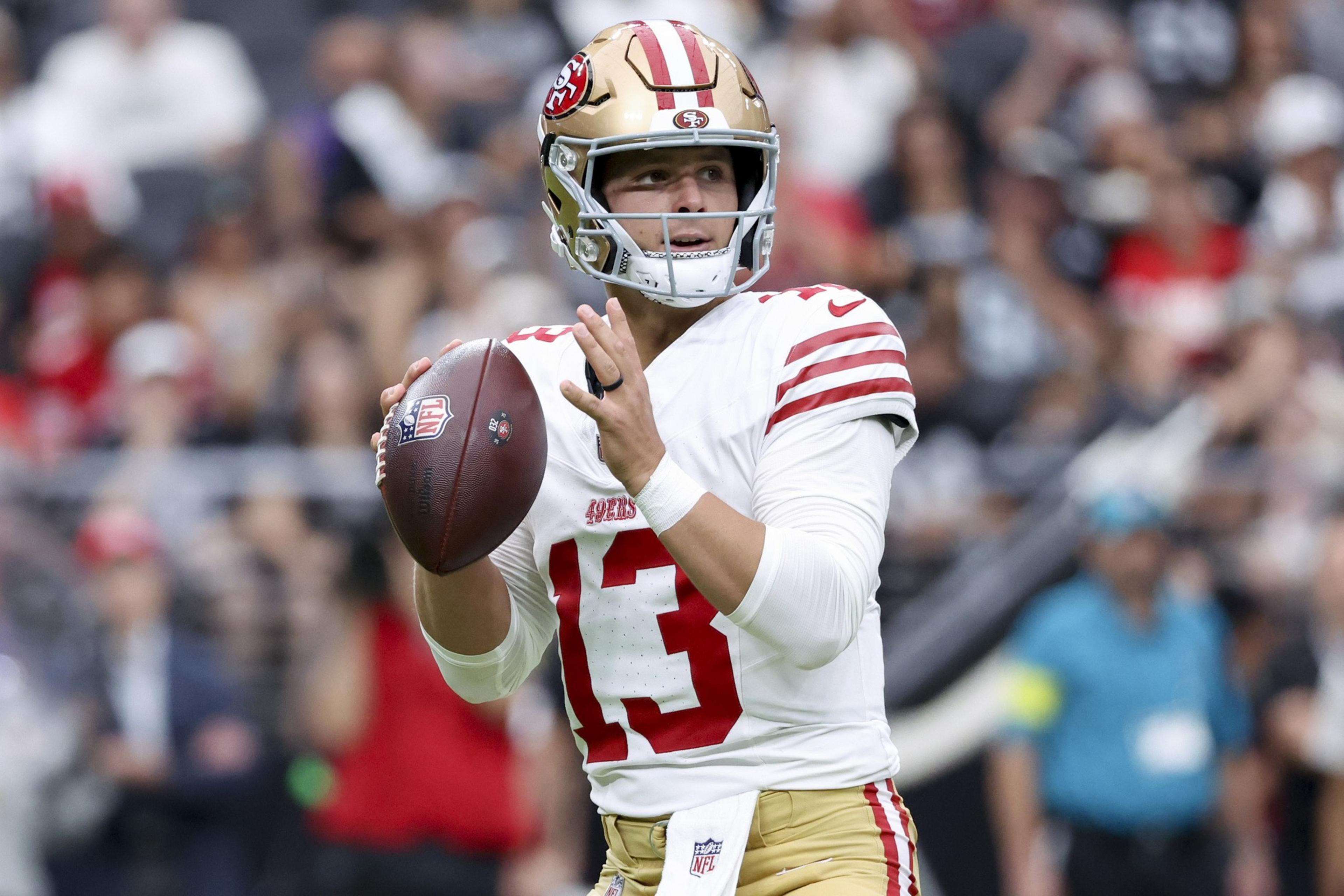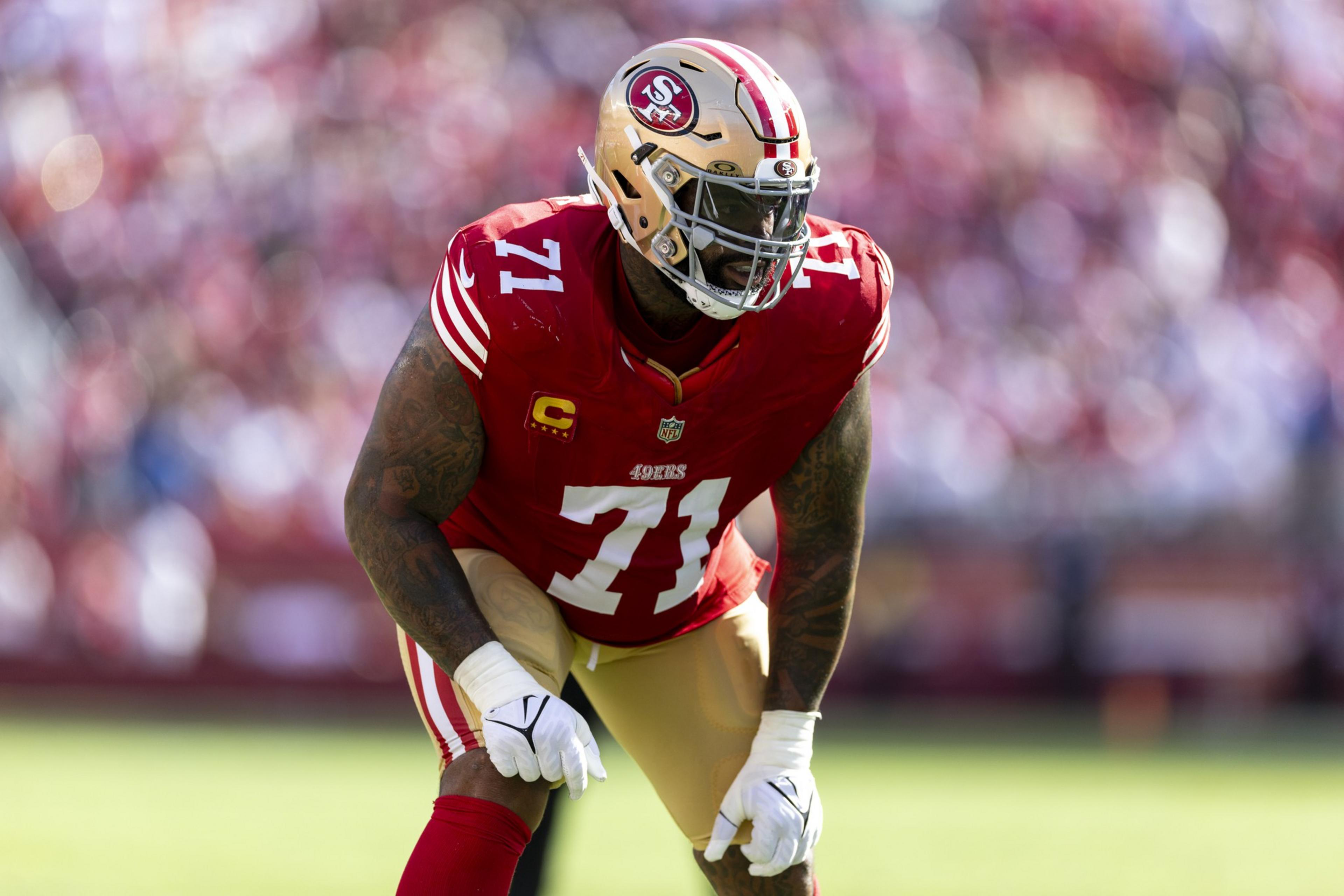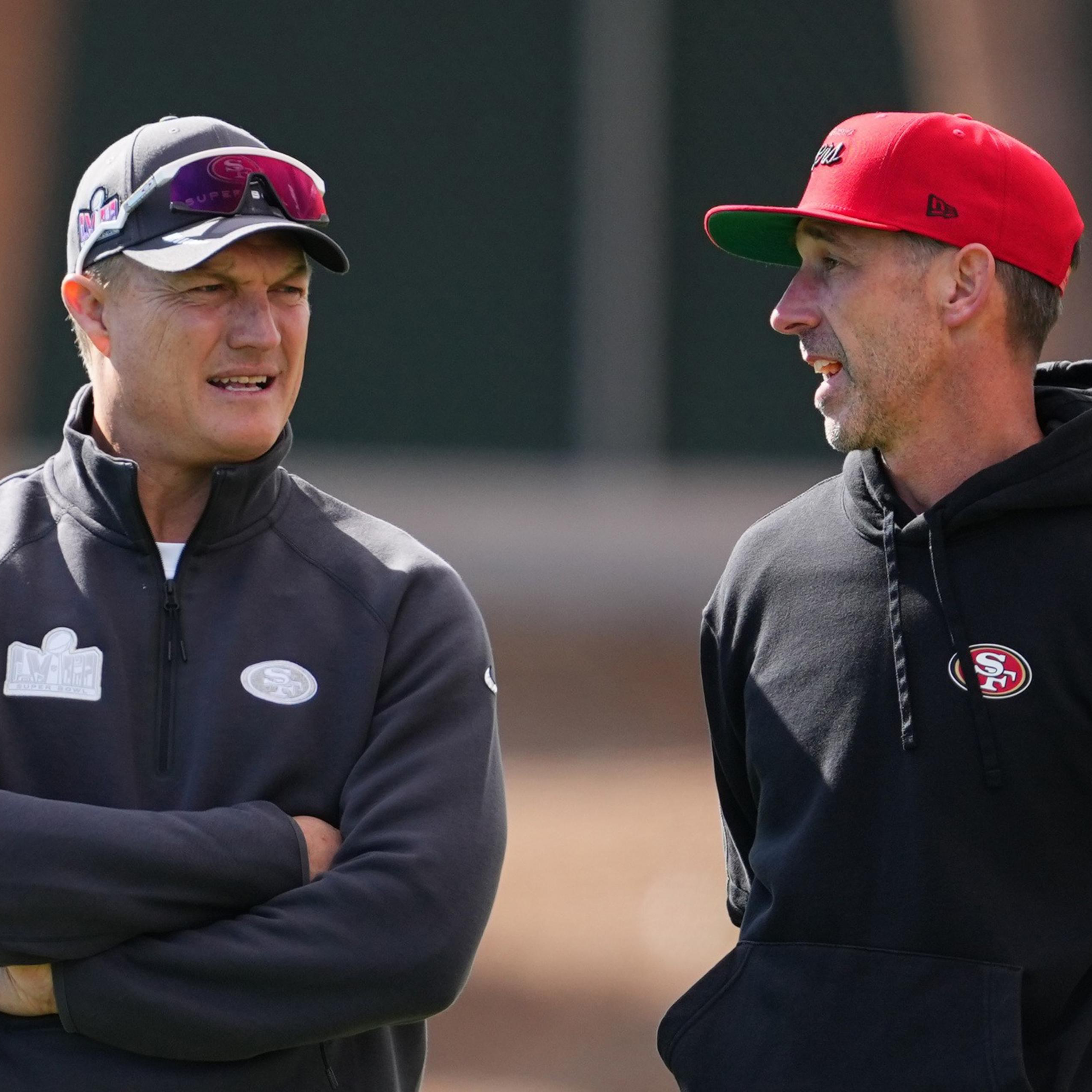Want the latest Bay Area sports news delivered to your inbox? Sign up here to receive regular email newsletters, including “The Dime.”
Injuries happen to all NFL teams at all times and especially to the 49ers in recent training camps. So why did the 49ers go into this summer acting like they either didn’t realize or didn’t want to accept this?
That’s just one of the glaring — and familiar — problems haunting this team a few weeks from its Sept. 7 opener in Seattle.
Maybe these issues will seem silly when and if the 49ers are 10-3 by late November. Maybe the season will fall apart in October, and we’ll understand that these were some of the main reasons. Or, most likely, it will be parts of both.
I wanted to put the potential 2025 pitfalls down in a single story right now, before the rush to Tuesday’s cutdown to 53 players and accompanying roster chaos over the days that precede and follow. We’ll check back on any cause-and-effect results in a few months.
But also, before legions of the faithful complain that I’m far too negative, let me state for the record that I think the 49ers will be a solid team this season, and much better than they were on the way to 6-11 last season. They still have as many high-level players as almost anybody in the league, they still are coached well, they have defensive coordinator Robert Saleh back this season, and they have a more promising group of young players than they’ve had in a while.
I’ll get to my official win-loss prediction early next month, but I’m not writing this to say that the 2025 49ers will be bad. I’m writing this to say that these are the reasons they possibly won’t be as good as they could’ve been.
They treated their 2026 cap situation like it’s a pending crisis, when it’s really not that bad
This is the root of their most problematic decision-making last spring and into this camp. It’s why Kyle Shanahan and John Lynch were convinced to get on board with the offseason payroll purge, and it’s why the 49ers aren’t likely to add significant help in the next few weeks, even as their wide-receiver and defensive-line depth charts teeter toward dire emergency.
It’s also why the 49ers’ tendency to under-scrutinize players’ recent injury history has come to bite them so harshly this year. Nobody’s saying that Lynch and Shanahan were planning for Russell Gage to have a major role this season, but their offseason purge plus the summer WR injury wave set him up for that. Until — surprise! — the oft-injured Gage got injured again this week.
This tendency is not new. In a fateful cost-cutting move several years ago, the 49ers traded away one of the best and most durable defensive linemen of this era, DeForest Buckner, and replaced him by drafting Javon Kinlaw, who had knee issues in college, then had knee issues during his vacant 49ers career.
Did the 49ers need to clean up their future cap commitment by discarding several veterans last spring? Sure, all teams should keep an eye on ballooning cap hits, and the 49ers have so many top-line players that things could’ve easily gotten out of control. They’re saving cap space this year (about $46 million right now, third-most in the league) so they can roll it over into next season.

And last spring Jed York was preparing to make a huge commitment to Brock Purdy (for $265 million, it turned out). So cuts were necessary throughout the roster, just to account for the new cash owed to QB1. All understood. This is life in the NFL.
But while they obviously have a lot of money committed deep into the future, the 49ers’ 2026 cap situation actually isn’t that bad. They don’t need to roll over that much space into next season. They’re about $10 million under the estimated 2026 cap line (counting top 51 salaries plus draft-class salaries). That’s not ideal, but it’s not totally out of whack for a team with so many good players.
The Kansas City Chiefs, for example, are listed at an estimated $61 million over the 2026 cap line. The Detroit Lions are listed at $43 million over. Both will have to make major adjustments before next season, of course. But this is normal. Everything is a tight squeeze at the cap line for talented teams.
The 49ers certainly have room to maneuver headed into the start of 2026, too. For instance, Nick Bosa’s 2026 cap hit is $42 million (up from $20.4 million this season). And Trent Williams’ cap hit next year is $38.9 million (up from $21.1 million).
That’s a combined $71.1 million. I strongly suggest that the 49ers find a way to knock down one or both charges by September 2026, and in fact, the 49ers signed these deals knowing they’d likely knock down the 2026 charges by the time next season rolls around.

Grand conclusion: The 49ers’ money people had reason to trim their commitments into the future, but once they got permission to cut, took it to the extreme in order to save cash. They might become a better football team in 2026 and beyond because of it — because they’ll have more cash to spend — but this mostly was about saving money right now. And the team is worse right now.
They went overboard with the cuts, some of which resulted in serious dead-cap hits this year
I understand why the 49ers traded Deebo Samuel last March — it incurred a $34.1 million cap hit on the 49ers’ books this year, but that relationship wasn’t going to last any longer than it did. And they saved actual cash by moving his $17.6 million salary to Washington’s books.
But I can’t come up with a solid football reason for the 49ers taking an $8.6 million dead-hit by releasing Leonard Floyd, a $1.3 million dead-hit by releasing Maliek Collins, and a $3.6 million dead-hit by releasing Kyle Juszczyk, only to re-sign him a few days later.
Tally up those and other hits, and the 49ers have more than $90 million in dead money this season, the most in the NFL. Would Collins and Floyd — who both played all 17 games with the 49ers last year — look pretty good on the 49ers’ defensive-line depth chart right now?
The 49ers aren’t actually paying that money this year. The dead money takes space on their cap as an accounting device. But that’s theoretically space they could’ve used to sign Davante Adams or somebody else, or actually used for Floyd and Collins, instead of having almost $10 million on their books for them to play for the Atlanta Falcons (Floyd) and Cleveland Browns (Collins).

To be fair, the 49ers are still among the top teams in cash outlay (what they’re actually spending on their payroll this year, minus cap tricks). York has paid at the top of the cash list for years, and I’m sure he’ll keep doing it.
But all this dead money and focus on saving space to roll over into next year has reduced the quality of this roster, when they’re still paying huge money to Bosa, Williams, Fred Warner, George Kittle, and Christian McCaffrey. The goal is to win every Super Bowl possible, right?
Before last spring, I believed the 49ers were doing everything and spending every dollar possible to win. But at least for this season, they’re not.
(Side note: It’s a fair question, asked repeatedly by 49ers fans, but I don’t believe the 49ers’ ownership of Leeds United, and whatever cash is necessary in that endeavor, is influencing their football decisions. I just think they picked this time to reset their financial structure for the next three years. I understand that point, as Shanahan explained to me at the start of camp. I just don’t buy that they had to go this far with it.)
They overestimated how swiftly the 2025 draft class could step into major roles
The bet by the team was that the draft picks could fairly easily replace the discarded veterans.
That was a questionable premise at the time, even before we knew who the 49ers would draft and how these players would look in training camp. It was always possible that the 49ers could come up with three or four immediate rotation players in this draft, just like they did in 2024 or as the Rams have done recently. But it wasn’t likely.
And now, seven of their 11 draftees are out with injuries. Several should be back soon, but there are no guarantees about that or that they’ll be up to speed. Or that any of them won’t get injured in the future.

The draft is, of course, the best way to replenish a roster, and sometimes it’s good to move out older, more expensive players for cheaper, faster, more athletic, and possibly healthier youngsters. But you don’t know if that will happen.
So why not keep several of the veteran backups and blend them with the draft choices? Give yourself options. You can always cut the older players, or even cut the younger players if they don’t work, because you’ve still got the veterans.
You don’t have to do it with all young players or all non-young players. You can line your roster with rookies while keeping enough reliable veterans to make sure you have numbers when and if the injuries hit. Because they’re going to hit.
They’ve possibly given Jauan Jennings some leverage they don’t want him to have
The 49ers’ money people never want to let themselves get manipulated the way it all went down last summer with Brandon Aiyuk. I get it. That was bad and costly, and there are lingering resentments.
But somehow, everything’s set up for Jauan Jennings to have similar leverage. Not because he’s as good or as valuable as Aiyuk, but because the 49ers left themselves so thin at this position — especially while Aiyuk continues to recover from his major knee injury — and teed up Jennings to wonder why he can’t use some of the same tactics.

After Jacob Cowing’s and Gage’s recent injuries and Demarcus Robinson’s suspension, the 49ers are down to Ricky Pearsall and Question Mark, and Question Mark as their top WRs going into the cutdown and possibly into Week 1.
The 49ers have been operating as if Jennings has no leverage because he re-did his deal last year, and it’s not likely there’s a $22-million-a-year deal waiting for him if he suddenly became a free agent. But if Jennings ever was going to get leverage, it’s now. And if this all blows up over the next few days or weeks, there will be a lot of blame to assign. Not all of it will be on Jennings.
They undervalued the first few weeks of this season
Last season started to crumble when the 49ers lost painful games in SoFi Stadium to the Rams in Week 3 and at home to the Cardinals in Week 5. They just couldn’t recover from those two division losses.
This season, they start with road games in Seattle and New Orleans, then have their home opener in Week 3 against Arizona. I don’t think an awful start would ruin the 49ers this time, because the rest of their schedule is so soft. (There’s nothing in 2025 that’s comparable to the Green Bay/Buffalo back-to-back roadies late last season.)

But losing a winnable game or two in the first month could be the difference between taking the division or having to fight for a wild-card spot. Starting 2-1 or 3-0 could give young players a lot of confidence. Starting 1-2 could obviously do the opposite.
And the 49ers signed Robinson knowing he was likely to be suspended for the first three games. They’ve known for months that Aiyuk is out for the first set of games. They didn’t sign any front-line veterans for instant impact. They’ve got a bunch of rookies who may or may not be good right away.
Maybe it’ll turn out OK for the 49ers. But it’s unnecessarily unpredictable, if you ask me. If anybody with the 49ers is 100% sure how it will turn out Sept. 7 at Lumen Field and over the next few weeks, they’re a lot smarter than me. And I think they might be wrong, too.

